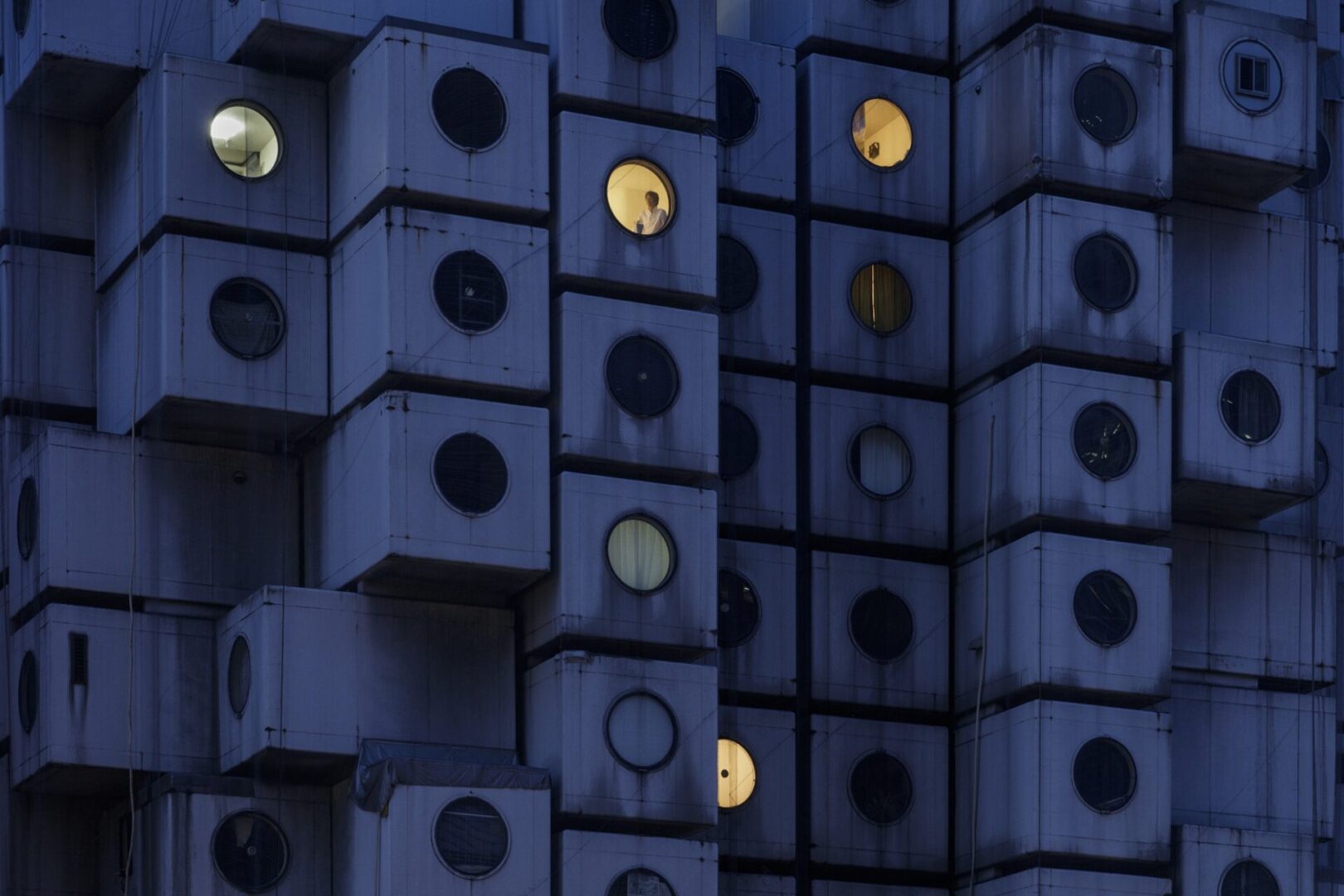In 1972, a groundbreaking building opened in Tokyo’s Ginza District. The Nakagin Capsule Tower, designed by architect Kisho Kurokawa, was marketed as “micro-dwellings” for travelling businessmen. It was composed of two interconnected concrete-and-steel towers that hosted 140 single-occupancy “capsules.” Each individual lodging, equipped with Sony colour TV, was designed to be replaced every 25 to 35 years to keep up with changing needs. That vision was never realised and the Tower was deconstructed in 2022. Now, MoMA offers the unique chance to step inside an original capsule – one of only 14 that survived the demolition. The Many Lives of the Nakagin Capsule Tower showcases pod A1305, restored with original fittings salvaged from other rescued pieces of the structure. The exhibition is an opportunity to inhabit a piece of architectural history and consider how buildings can evolve in unexpected ways.
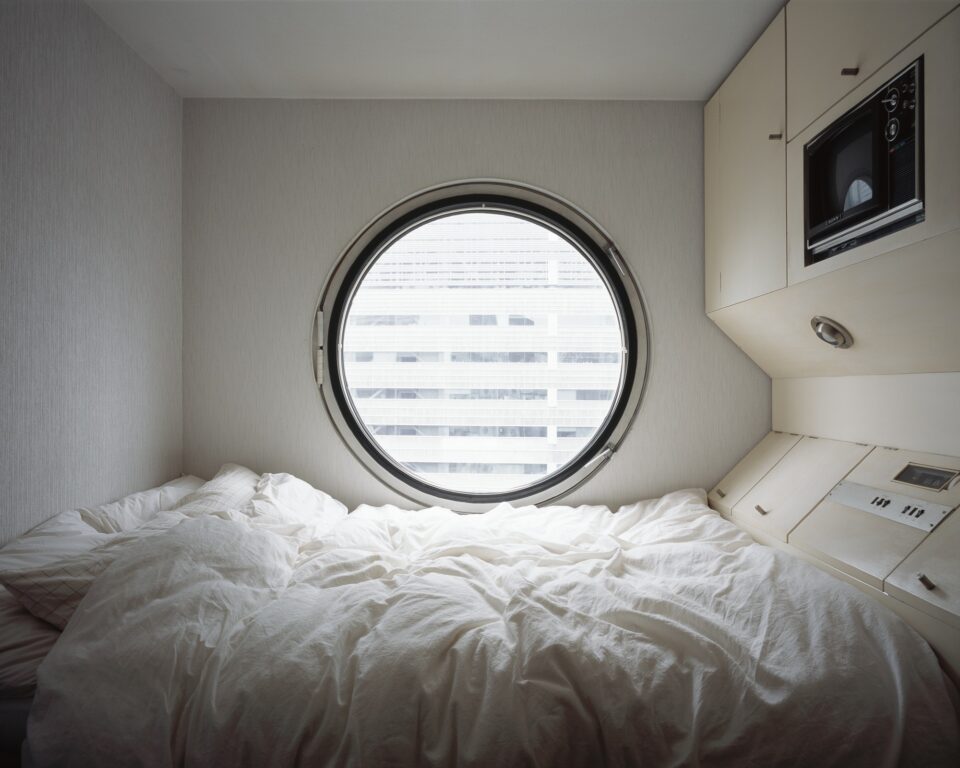
The Tower was a resounding success when it opened, its 140 capsules selling out almost instantly and becoming one of the most sought-after properties in the city. The architect said at the time that the tiny pods would be a “place to rest and recover” as well as “an information base to develop ideas, and a home for urban dwellers.” They were never intended to be full-time dwellings, a fact that adds to the radical nature of Kurokawa’s vision. The building is emblematic of Metabolism, one of the movement’s only designs to be fully realised. The Japanese architectural style emerged in the 1960s and was influenced by biology, conceiving cities that could adapt over time. The idea was that the world is not static, so our homes should be made to support development and progress. For Kurokawa, this meant architecture capable of growth, adaptation and transformation through what he called “metabolic cycles.” In the case of the Nakagin Capsule Tower, the building’s cores were intended to remain intact, whilst individual capsules would be replaced. This would allow for modernisation of fittings as well as keeping up with new structural trends.
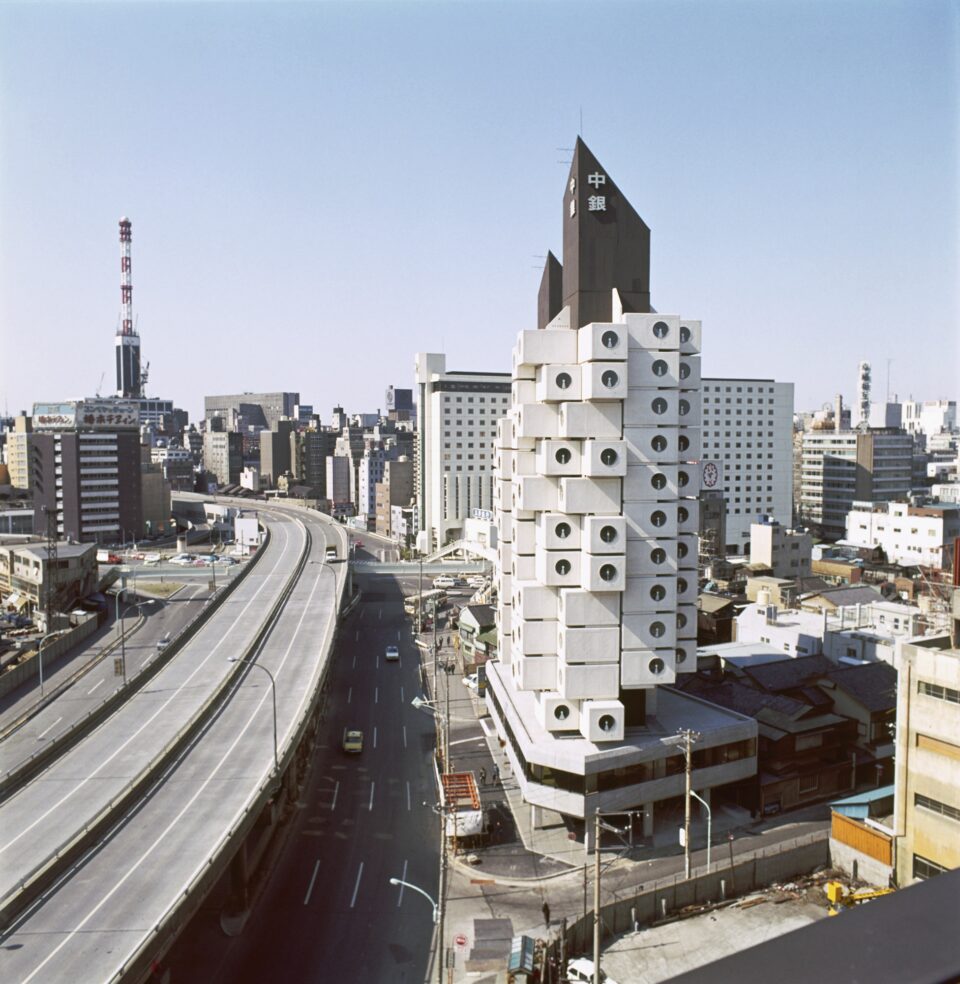
The intended maintenance and updating of the pods never happened. Instead, over five decades, the capsules remained, but their function dramatically changed as they were repurposed into second homes, offices, student rooms or even tea rooms, libraries, galleries and DJ booths. The units began to rusk and leak, and the later discovery of asbestos made any prospective renovations almost impossible. Demolition began on April 12, 2022 – 50 years after the beacon of modernity and innovation opened. In an emotionally charged piece for the Architect’s Newspaper upon the commencement of deconstruction, Mark Dytham wrote: “The tower’s demolition is no surprise, as its problem were well known from the start. That it survived half a century is a feat in and of itself. Kurokawa showed us a version of a possible pod world that proved to be immensely influential, for better or worse. While we shouldn’t repeat the tower’s mistakes, its optimism about alternative future is a legacy worth noting.”
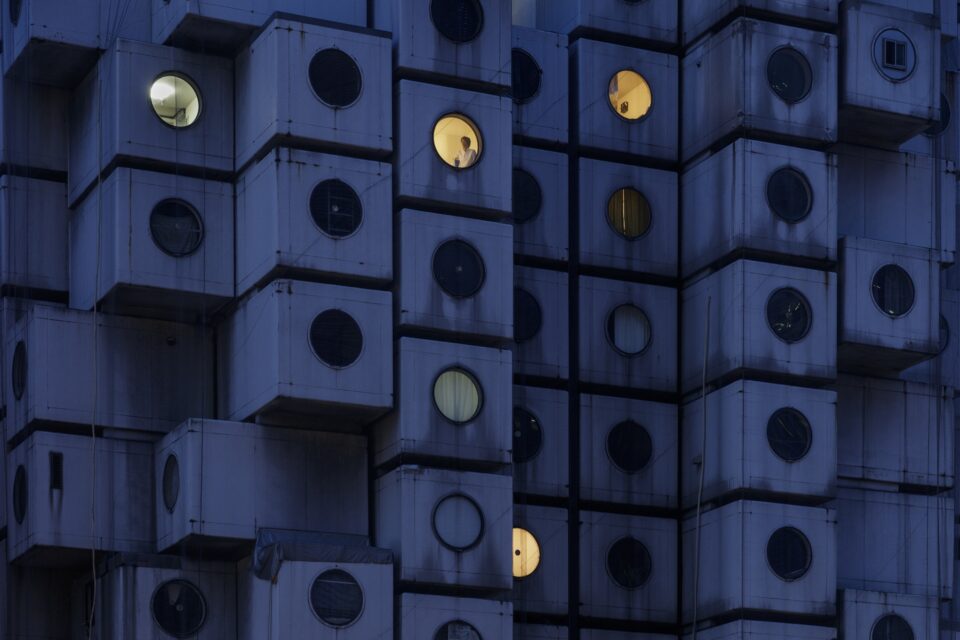
MoMA’s exhibition keeps this remarkable influence alive, inviting audiences to experience the capsules as Kurokawa intended. It is somewhat apt that the architect’s creation – designed to be removable and changeable – are now scattered across the world, finding new life in galleries and cultural institutions. The New York museum acquired the unit in 2023, but this is the first time it’s on display to the public. Once located on the highest floor of the building, capsule A1305 is fully restored with the maximum number of original fittings salvaged from other rescued capsules, including the full array of electronics that were offered as add ons. The exhibition invites visitors to reconsider how cities confront aging buildings and rapid urbanisation – and to imagine how architecture might endure by taking on new roles, functions and meanings beyond what its designers ever imagined.
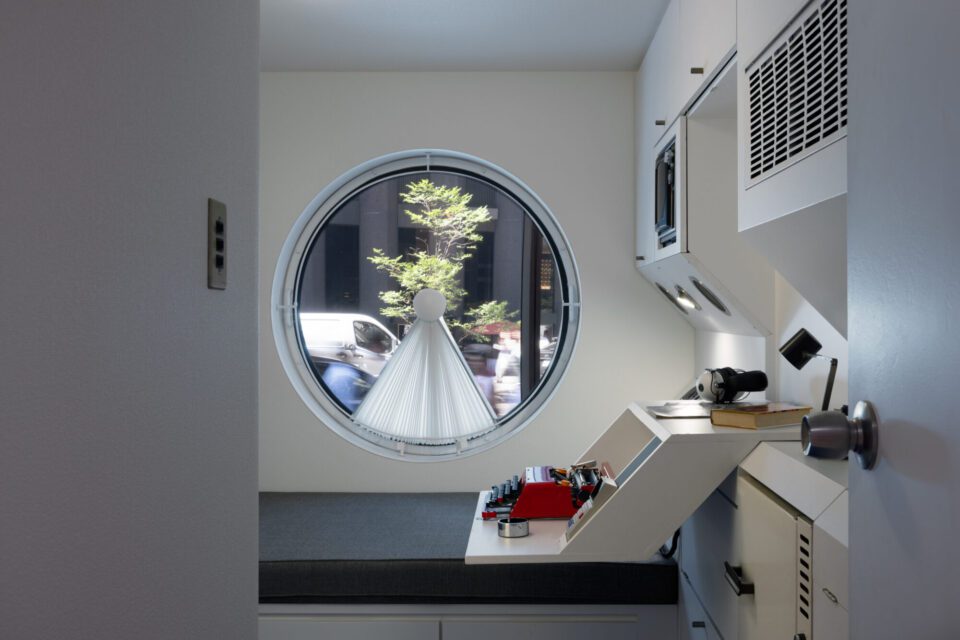
The Nakagin Capsule Tower’s influence is felt all over the world – a testament to its visionary design. The Centre Pompidou, now an iconic part of Paris’ architectural identity, was influenced by the Metabolism movement. The aesthetic even found its way into director Wes Anderson’s 2018 animated film, Isle of Dogs, which is set in fictional Japanese city intended to “look both old and new.” As architects and designers look to a future that is more sustainable and in tune with the natural world, Kurokawa’s ideas feel more relevant than ever. He was a visionary, and whilst his ambitions were not realised, the intention to create a city that adapts with its population is one that many continue to pursue. MoMA’s exhibition honours this legacy and encourages audiences to envision its place in tomorrow’s urban spaces. As Dytham writes in his tribute to the iconic structure: “This is one of those projects that was so much better for being built and failing, because it would have been a failure if it hadn’t been built. Because it was built, because there were failures, and because we learned from them, it changed architecture.”
The Many Lives of the Nakagin Capsule Tower is at MoMA, New York until July 2026: moma.org
Words: Emma Jacob
Image Credits:
1&4. Night time at the Nakagin Capsule Tower, with Mr. Takayuki Sekine seen through the window of capsule B1004, 2016. © Jeremie Souteyrat.
2. Noritaka Minami. B1004 I, from the series 1972 (2010–22). 2011. Archival pigment print, 20 × 25″ (101.6 × 127 cm) © Noritaka Minami.
3. Kisho Kurokawa, Architect & Associates (Tokyo, est. 1962). Nakagin Capsule Tower, Tokyo. 1970–72. Exterior view. 1972. Photograph: Tomio Ohashi.
5. Installation view of The Many Lives of the Nakagin Capsule Tower, on view at The Museum of Modern Art, New York, from July 10, 2025, through July 12, 2026. Photo: Jonathan Dorado.


